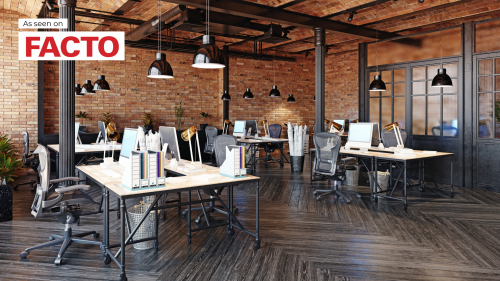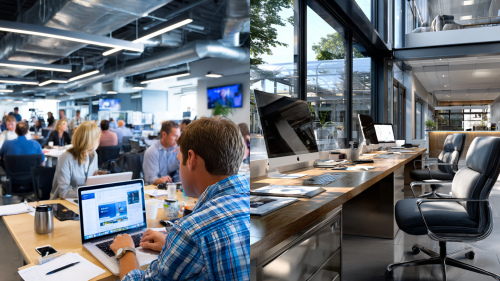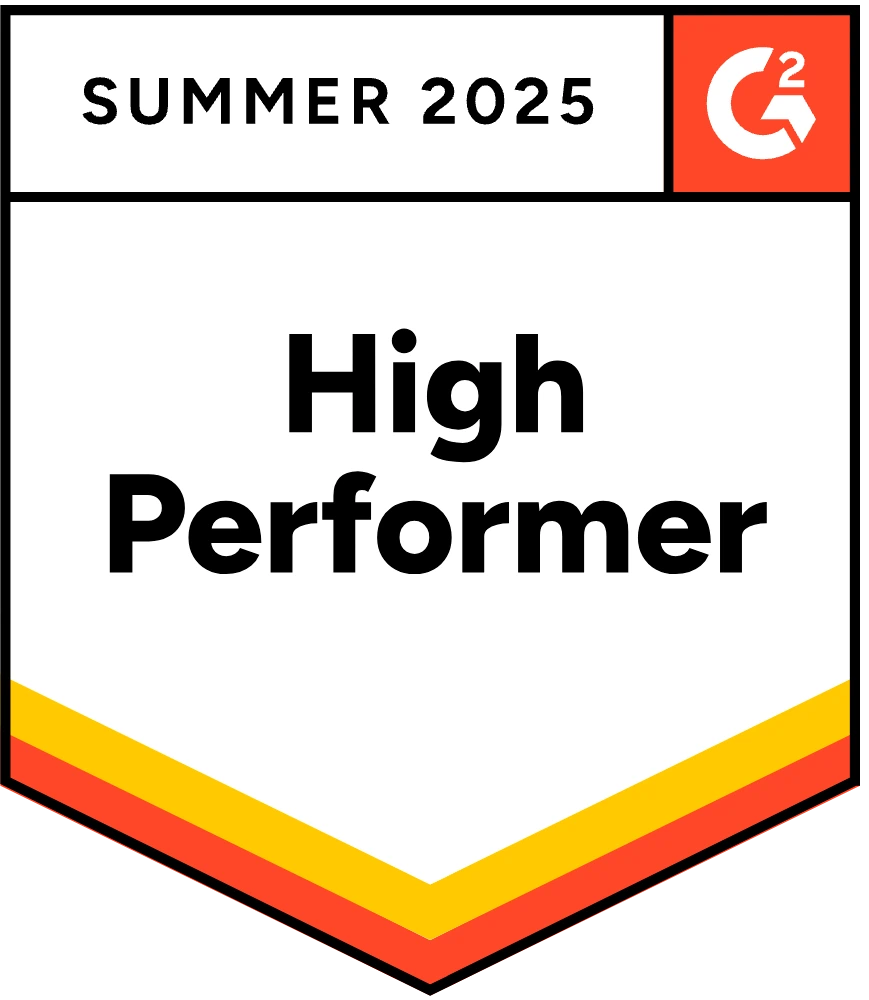Corporate Real Estate (CRE) portfolio reduction is the strategic process of downsizing a company’s real estate assets for space optimization, operational costs reduction, and enhanced overall efficiency. In today’s rapidly evolving work environment, characterized by the rise of hybrid work models, this approach has gained significant importance. Companies are increasingly finding that their office spaces are underutilized, prompting a need to reassess and streamline their real estate holdings.
By reducing their CRE portfolios, organizations can achieve substantial cost savings on rent, utilities, and maintenance. Additionally, a leaner portfolio can lead to improved operational efficiency, allowing for better resource allocation and more agile business operations. However, it’s crucial to balance these reductions with maintaining a positive employee experience and ensuring that the remaining spaces are conducive to productivity and engagement.

Space Needs Assessment
A space needs assessment is a pivotal step in optimizing a company’s CRE portfolio while ensuring a positive employee experience and maintaining productivity. This process involves a thorough evaluation of current and future space requirements to align with both business objectives and employee needs.
Key considerations in this assessment involve understanding the various trends in the workplace landscape and space demand. Let’s delve into four key trends:
4 Trends in Workplace Space Demand
1. Hybrid Work
The hybrid work model, blending remote and in-office work, has become a cornerstone of modern workplace strategies. Research indicates that hybrid work can lead to small to moderate improvements in productivity. Employees often report enhanced work-life balance, reduced burnout, and higher overall satisfaction. These factors contribute to lower turnover rates and a more engaged workforce.
However, hybrid work is not without its challenges. The widespread adoption of hybrid work has led to reductions in office space portfolios. Current office space utilization rates are under 40%, a significant drop from the pre-pandemic global average of 64%. To address this, many organizations are optimizing their portfolios, with plans to reduce their size by over 30% in the next three years.
Facility managers must leverage detailed utilization data to better understand employee workstyles, reduce occupancy costs, and enable dynamic building management. This higher level of insight will facilitate informed decision-making and optimize the workplace environment.
2. Hot Desking and Hoteling
Hot desking and hoteling are two prominent strategies in space optimization, particularly relevant in the context of hybrid work models. Hot desking involves a flexible workspace arrangement where employees do not have assigned desks but use available workstations on a first-come, first-served basis. This approach can significantly reduce real estate costs by maximizing space utilization.
On the other hand, hoteling offers a more structured system where employees reserve specific workstations in advance, often through a virtual floor plan and booking system. This method provides a balance between flexibility and predictability, catering to employees who prefer some level of certainty in their workspace arrangements.
Both strategies come with their own set of benefits and challenges. While they can lead to substantial cost reductions and improved operational efficiency, they also require careful implementation. Ensuring seamless connectivity, effective reservation systems, and managing workspace density are crucial for a smooth transition. Additionally, employee feedback and buy-in are essential to address concerns about loss of personal space and to maintain job satisfaction and productivity.
3. Activity-Based Workspaces
Activity-based workspaces represent a significant shift in office design, tailored to the diverse tasks employees undertake throughout their workday. This approach provides a variety of work environments, each optimized for specific activities, thereby enhancing both productivity and employee satisfaction. By offering different settings such as quiet focus rooms, collaborative lounges, and shared desk spaces, companies can cater to individual work styles and preferences.
The core principles of activity-based workspaces include fitting the task to the environment and providing flexibility and choice. Employees benefit from the freedom to select the workspace that best suits their current task, whether it requires deep concentration or team collaboration. This flexibility not only boosts productivity but also improves space utilization, as companies can optimize their real estate footprint without compromising on the quality of the work environment.
However, implementing activity-based workspaces comes with challenges, such as managing real-time occupancy and encouraging employees to adapt to new routines. Effective use of technology, like smartphone apps displaying live utilization data, can help manage these challenges by ensuring that the right spaces are available when needed and guiding employees on the optimal use of each area.
4. Tracking Space Utilization and Occupancy
Before the COVID-19 pandemic, optimizing office space primarily involved increasing density by fitting more employees into less space. However, the pandemic has drastically altered this approach, necessitating reduced occupancy limits and the enforcement of social distancing measures. Even after these restrictions are lifted, employees continue to favor less crowded work environments. This shift towards de-densification not only helps in minimizing clutter and simplifying cleaning but also enhances overall productivity.
In response, many organizations are now prioritizing the de-densification of workspaces. Instead of expanding their real estate, they focus on tracking space utilization and repurposing underused areas. The adoption of hybrid workplace models further supports this strategy by reducing the number of employees present in the office at any given time.
Software and IoT for Space Optimization
Technology integration is the strategic incorporation of digital tools and systems into corporate real estate management to enhance efficiency and productivity. With these evolving workspace models, technology plays a crucial role in optimizing space usage, tracking occupancy analytics, and improving the overall workplace experience.
Advanced space management software now integrates occupancy data with systems for booking, scheduling, lease administration, and facilities maintenance. This integration provides a comprehensive view of space usage and associated costs per room.
These insights help organizations identify which spaces are meeting expectations, which are underutilized, and which are in high demand, thereby enabling more effective space optimization.
What if, beyond analyzing data and drawing conclusions, you could also precisely simulate your space with software to visually explore how to rearrange and optimize it? If that sounds intriguing, then you can’t afford to miss this webinar!
Space Simulator Webinar
Join us next Monday, June 24th at 11:30h CEST, for our exciting new webinar! We’re thrilled to have Veronika Korchunova, Product Marketing Manager at Spacewell and an expert in consumer trends and workplace innovations, as our guest speaker. Don’t miss out on her invaluable insights!
Here’s what you’ll learn:
- Current trends in space optimization: Discover how CRE portfolio reduction is impacting businesses today.
- Understanding the space equation: We’ll delve into the factors affecting space supply and demand in a hybrid work environment.
- Measuring hybrid work effectiveness: Learn how to gauge the success of your hybrid work policies with data-driven insights.
- Optimizing your space needs: Discover how to right-size your office footprint for cost savings and sustainability.
- Introducing Spacewell’s newest space simulator: Get a live demo of our cutting-edge tool that helps you visualize and optimize your space utilization.
By attending this webinar, you’ll gain the knowledge and tools to:
- Make informed decisions about your office space strategy.
- Reduce costs and improve operational efficiency.
- Create a more sustainable workplace environment.
- Enhance employee experience and satisfaction.
Don’t miss out! Register now for this free webinar and start optimizing your office space for the future.











